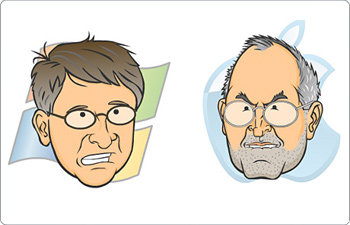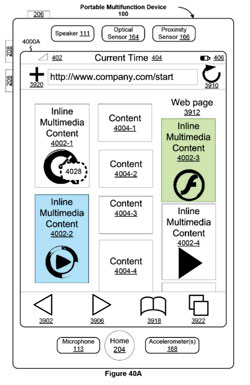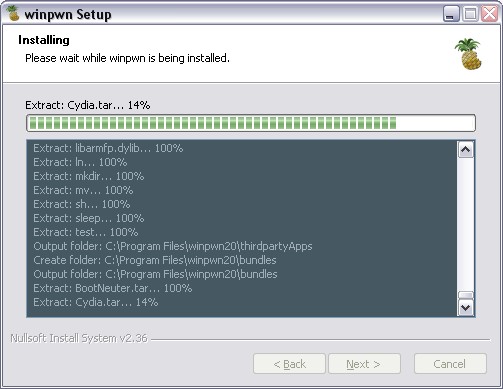News tagged ‘Flash’
"I'm rich" $999.99 application video
I didn't want to write about this stupid application, that was added to AppStore several days ago. It is useless. All it does is it costs $999.99. Unfortunately 8 people bought it, 2 of them did that by mistake and will et moneyback.
Now Apple removed this application. So here is a video showing this application:
WinPwn 2.0.0.4 with support of 2.0.1 firmware
released just a day ago. And now WinPwn - iPhone jailbreaker and unlocker for windows is avaliable. The main new feature - it supports firmware 2.0.1.
Download 2.0.0.4: [] []
Download firmwares: iPhone , , , iPhone 3G ,
2.0.0.4 features:
- Support for both 1.1.4, 2.0, 2.0.1
- Root partition resize support
- Installer support
- Support for WinXP and Vista 32/64bit.
Notes are as usual:
- You MUST do a full uninstall of winpwn before installing the new version
- Make sure you have the latest version of iTunes (from 7.7)
- WinPwn uses 300MB of ram at peak due to the ipsw being extracted in memory
- You must first click browse and load an IPSW to use WinPwn (i thought this was clear)
- For 2.0 only the *5A347_Restore.ipsw files are valid. The 345 image will not work
- If you see Failed to load image catalog/payload catalog, this is fine and won’t cause problems
- If you already have service with AT&T do not activate or install Youtube Fix
- As usual jailbreak for iPhone and iPhone 3G, unlock only for iPhone.
- It is recommended to use at least 550mb partition size to accommodate a space issue that causes some folks errors such as “the ipsw failed to create”.
How to:
GTS World Racing on iPhone
Present like Steve Jobs
No comments ![]()
iPhone + Dynolicious vs G-Tech Pro
There was a post about the coolest application for the iPhone: .
Guys from Garage419 took Dynolicious out on the track and put it against the circuit's clock as well as the popular G-Tech Pro accelerometer-based dynometer, generally regarded as the industry standard for consumer performance metering (about $150). Surprisingly, at less than one tenth of the G-Tech Pro's retail price, Dynolicious was more accurate. Watch the video, forgive them for some commertial inside.
CNet about iPhone 3G jailbreak
Broadcast video live from iPhone
has released its mobile video streaming application for jailbroken iPhones to the public. The service allows users to broadcast video live from their phones using Wi-Fi or the EDGE network which can be viewed on Qik’s site or through its embeddable player. Unfortunately, the application is only compatible with phones running the 1.1.4 firmware.
Users running the 2.0 version of the software will need to wait for Qik to release a compatible version, which the company expects to do in the near future. Unfortunately, it’s likely that the application won’t be available through the official App Store, as Apple still hasn’t enabled video capture using the phone’s integrated camera.
iPhone Arm - your third arm
New flash game: Gates vs Jobs

This is a game. Prepare to win! Just choose who do you want to play, Bill Gates or Steve Jobs:
NES emulator 2.0.3
The new version of the popular for the iPhone and iPod touch now includes accelerometer control for all games. The implementation is very simple: A tilt is equivalent to controlling input in that direction. This means that tilt control can be used in any game loaded into the emulator, but also that some of the controls are pretty much balls. Also, this app does not live in the official app store. NES.app 2.3.0 with tilt control is available now in Cydia.
As seen in the video, controlling Mario is fairly natural, though quick turns and exact jumps are difficult to execute (playing Mario with the stock controls is often worse, though). Bomberman sort of works, but in that case—and many others—the old touch control overlay is much easier. Obviously none of these games were designed with tilt control in mind, but a surprising number are at least playable.
via gizmodo
MagixPad - notes app with copy/paste
This video walkthrough of MagicPad, a rich text editor app that is still pending acceptance into the App Store, is notable for showing the first working copy and paste framework on the iPhone (at the 1:00 mark). Of course, SDK limitations keep the functionality quarantined within MagicPad itself, but its developers, Proximi, hope to use it as a case study for pushing forward one of the iPhone software's most wanted features.
via gizmodo
Related posts:
Unlock for IPhone 3G - almost there
DevTeam posted a new interesting screenshot. They successfully downgraded modem firmware. This is not an unlock (yet), but it is a good illustration of the first progress made with regard to hacking the 3G baseband. They accomplished this by being able to execute their own code on the baseband that allows to circumvent security checks and flash the baseband with older, disallowed firmware. Please note this has been accomplished using software only, the iPhone 3G has not been disassembled or hardware modified in any way.
Flash for IPhone

United States Patent and Trademark Office (USPTO) just released a large document detailing "Touch Screen Device, Method, and Graphical User Interface for Determining Commands by Applying Heuristics". There are lots and lots of information in this patent (#20080174570) but only one particular section that really caught my eye. It has to do with one feature many of us have been wishing for on the iPhone --- support for Flash content.
The content from this patent doesn't say whether Apple will add support for Flash to future versions of iPhone OS 2.0, but it does tell us that Apple has most definitely considered it. And as an added bonus, we may even see native support for Windows Media content.

[0778]FIGS. 40A-40F illustrate exemplary user interfaces for playing an item of inline multimedia content in accordance with some embodiments.
[0779]In some embodiments, user interfaces 4000A-4000F include the following elements, or a subset or superset thereof: [0780]402, 404, 406, 3902, 3906, 3910, 3912, 3918, 3920, 3922, as described above; [0781]inline multimedia content 4002, such as QuickTime content (4002-1), Windows Media content (4002-2), or Flash content (4002-3);
via iphonebuzz
New adv videos of IPhone 3G
WinPwn 2.0 released

You can download it from or .
Featues:
- Support for both 1.1.4 and 2.0
- Custom Image Support
- Custom Payload Support
- 3g iPhone support
How to:
- First create a custom IPSW using the IPSW Builder (original is ).
- Click "Ipwner" and browse for the custom IPSW that you just created. This will pwn itunes and allow you to flash
- Custom IPSW files via DFU mode
- Once you have pwned Itunes, put your phone into DFU mode. If you don't know how to do this click .
- Once you are in DFU mode Itunes will pop up and then you can hold shift and click restore and browse to your custom IPSW file.
Important Notes
Remove Winpwn 1.0 completely if you have it installed. Installing over the top of WinPwn 1.0 will cause problems.
Make sure you have the latest version of iTunes ( Currently 7.7)
If you already have service with AT&T do not activate or install Youtube Fix
UPDATE: there is a new version avaliable:
 Leave a comment, read comments [1]
Leave a comment, read comments [1]